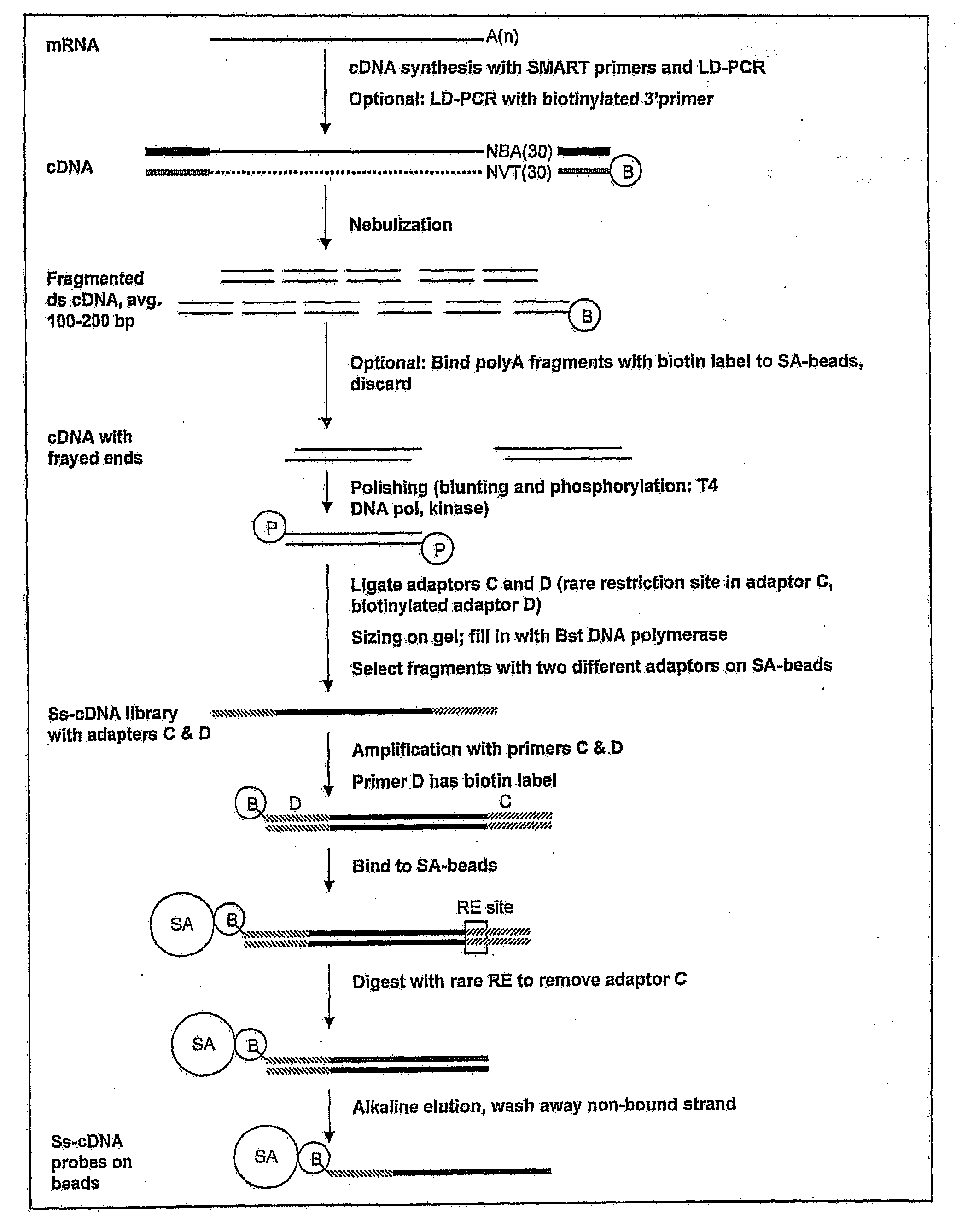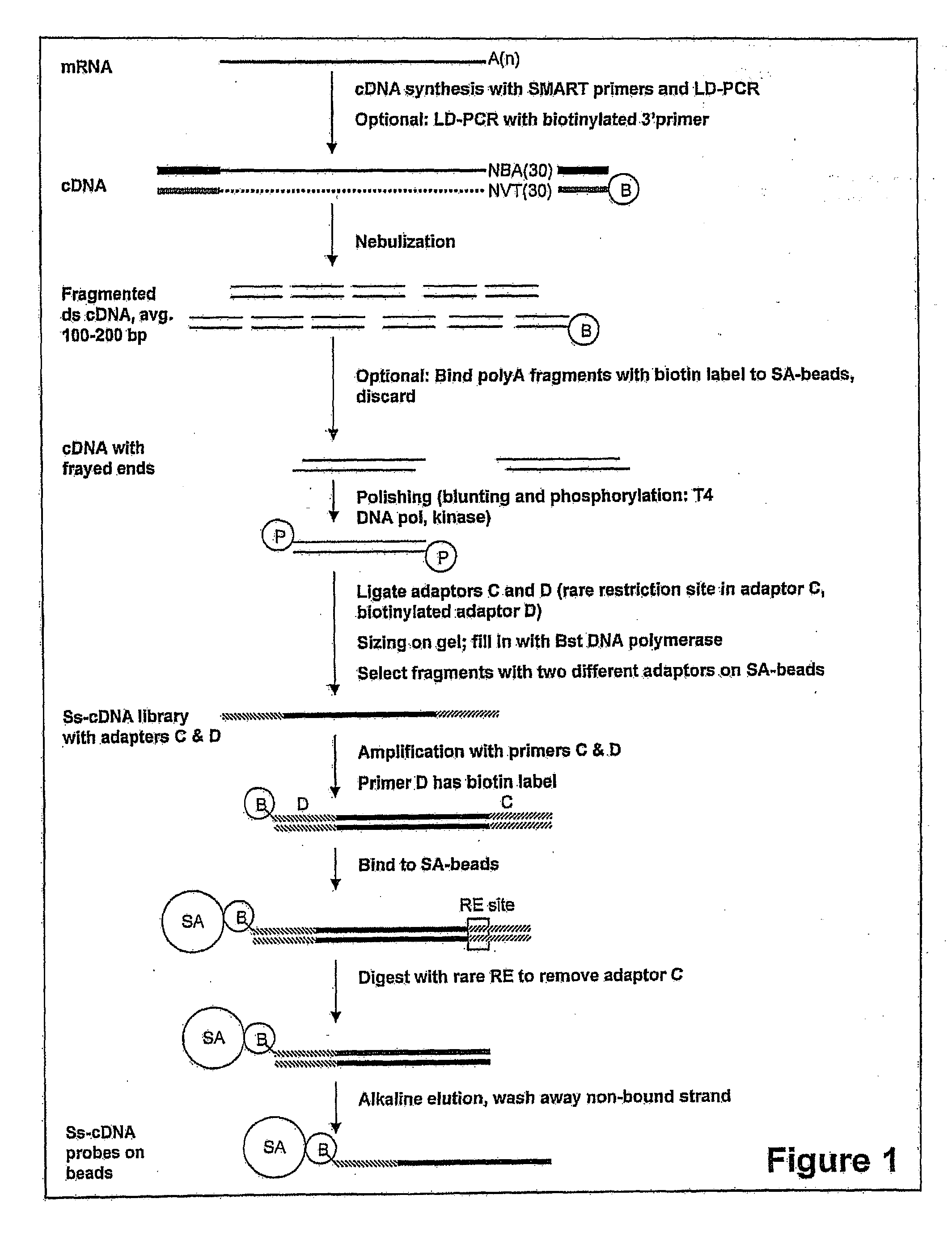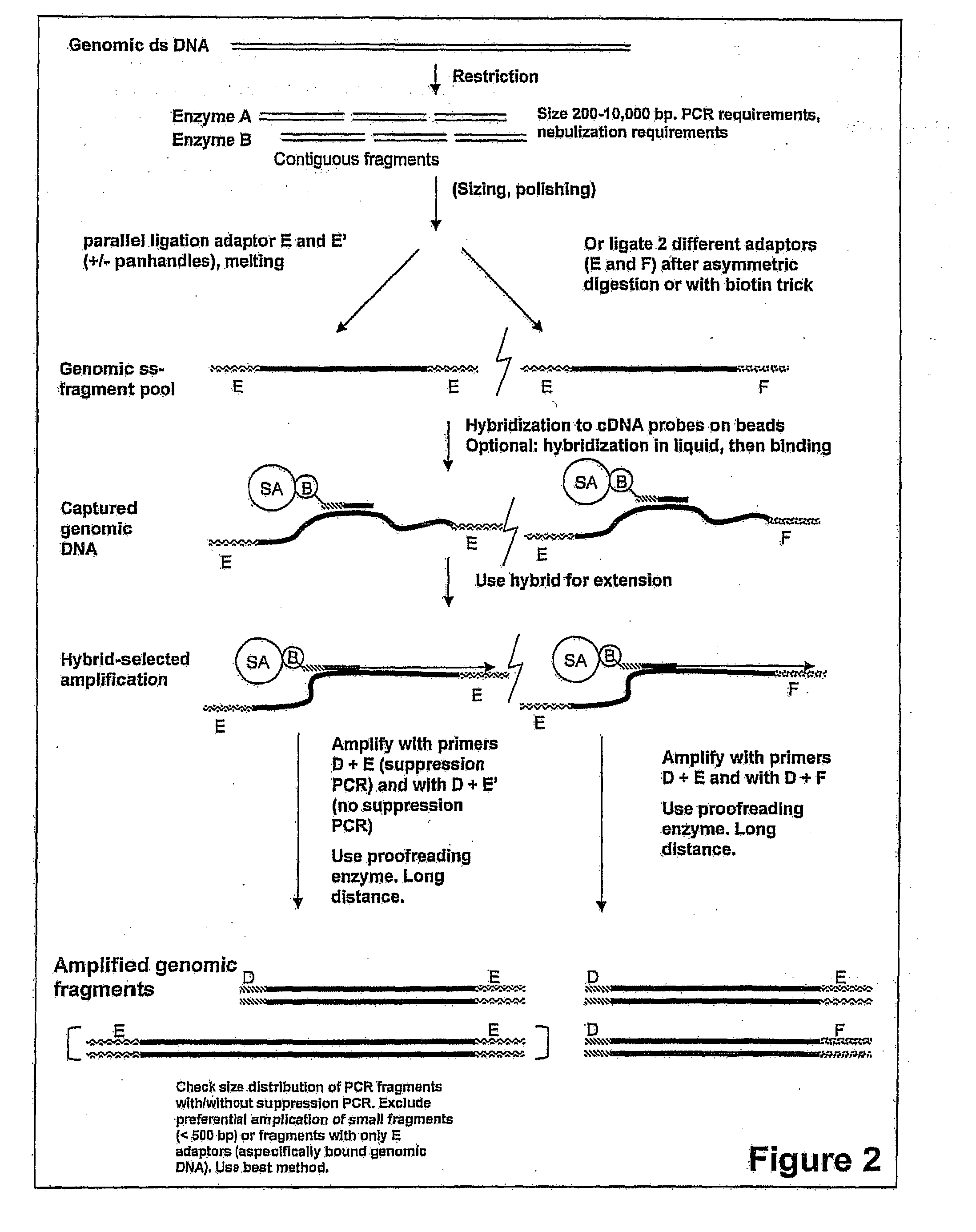Expression-linked gene discovery
a gene discovery and expression-linked technology, applied in the field of molecular biology and biotechnology, can solve the problems of inability to indentify, time and cost effectively, and inability to realize practical and cost effective current sequencing technologies, and achieve the effect of increasing the amount of blunt-ended species, increasing the amount of blunt-ended dna fragments available, and increasing the efficiency of cloning of pcr products
- Summary
- Abstract
- Description
- Claims
- Application Information
AI Technical Summary
Benefits of technology
Problems solved by technology
Method used
Image
Examples
case 1
[0240]
[0241]Apple genomic sequence FRA8S6E02IN5QW (sequence, see below) showed 98.9% identity with part of apple contig cg8984st—846—7, built from 7 EST sequences (GenBank Acc: CO899363, CO419003, CO052855, CO752637, CO901846, CN927506 and CO066317).
[0242]The best BLASTX (Altschul, S. F., et al., NAR (1997) 25:3389-3402) hit with contig cg8984st—846—7 of Arabidopsis thaliana was gene AT1G70160 (genome locus tag, The Arabidopsis Information Resource, located on the World Wide Web at arabidopsis.org) with e-value 2e−104. Alignment of the three sequences showed that FRA8S6E02IN5QW contains part of the protein coding sequence (CDS) of a protein with unknown function, which partially overlaps with contig cg8984st—846—7. This is shown schematically in FIG. 4, panel A and the sequence alignment of relevant parts of the sequences are shown below. The protein coding sequence of FRA8S6E02IN5QW is also 77.8% identical with AT1G70160, but is interrupted at the 5′-end of the sequence by an intro...
case 2
[0243]
[0244]Apple genomic clone FRA8SE02HOH39 (sequence, see below) showed homology to apple contig cg12357st—1428—21, built from 21 EST sequences (GenBank Acc: CN930585, CV525017, CN873920, EB149394, EB121634, EB116211, CN909797, EB115871, EB154300, CN877800, EB121026, CN932122, CN860924, EB110988, CO865849, CN488473, CN497072, CN903918, CN903403, DR996731 and CN894330). Contig cg12357st—1428—21 contains the complete coding sequence for a protein with similarity to ATP-dependent Clp protease proteolytic subunit (best BLASTX hit EEF49880, Ricinus communis, score 3e−128).
[0245]FRA8SEO2HOH39 overlaps with the 3′-untranslated region of cg12357st—1428—21, and extends beyond the polyA tail into the non-transcribed genomic DNA as is shown in FIG. 4, panel B and the sequence alignment below.
[0246]Therefore, FRA8SEO2HOH39 is an example of a genomic sequence containing the 3′-flanking sequences of a transcribed region.
case 3
[0247]
[0248]Apple genomic sequence 02-H03 (sequence, see below) overlapped with the 5′-part of 40 apple ESTs, with similarity to an ethylene response factor (best BLASTX hit AAV66332, Cucumis sativus, score 6e−34). This is schematically shown in FIG. 4, panel C, for EST 91044950 (GenBank Acc: EB155368). The other ESTs had similar 5′ends. The alignment of a relevant part of the sequences is shown below. The genomic sequence extended 744 by upstream of the translation start codon (ATG) of the gene. No sequence similarity was found to any gene outside the coding region in 02-H03, confirming that this is a genomic sequence. A conserved sequence, upstream of the transcription start is the TATA box. A putative TATA-box (TATAAA) was found 39 by upstream of the start of the EST.
PUM
| Property | Measurement | Unit |
|---|---|---|
| temperature | aaaaa | aaaaa |
| temperature | aaaaa | aaaaa |
| pH | aaaaa | aaaaa |
Abstract
Description
Claims
Application Information
 Login to View More
Login to View More - R&D
- Intellectual Property
- Life Sciences
- Materials
- Tech Scout
- Unparalleled Data Quality
- Higher Quality Content
- 60% Fewer Hallucinations
Browse by: Latest US Patents, China's latest patents, Technical Efficacy Thesaurus, Application Domain, Technology Topic, Popular Technical Reports.
© 2025 PatSnap. All rights reserved.Legal|Privacy policy|Modern Slavery Act Transparency Statement|Sitemap|About US| Contact US: help@patsnap.com



